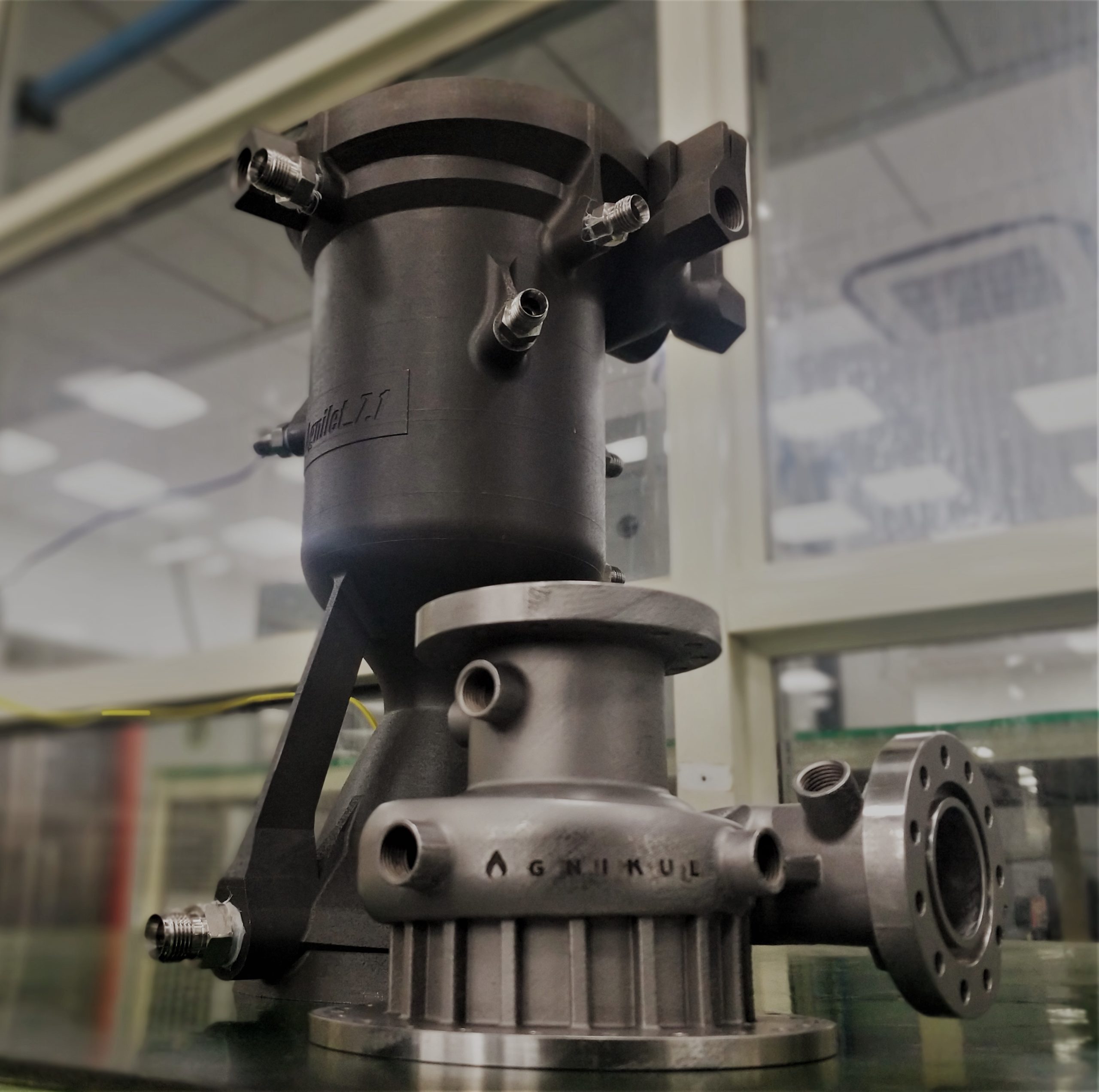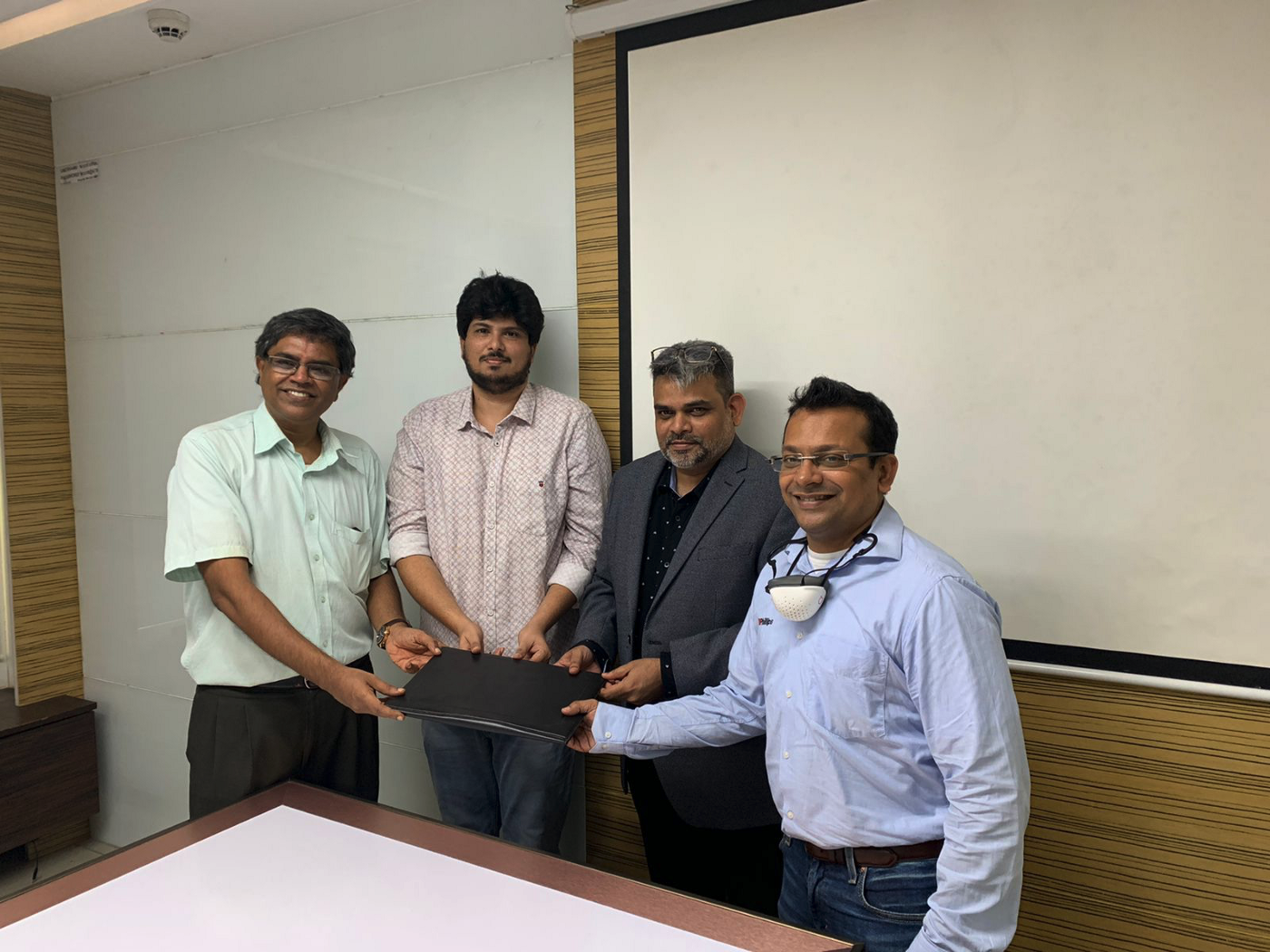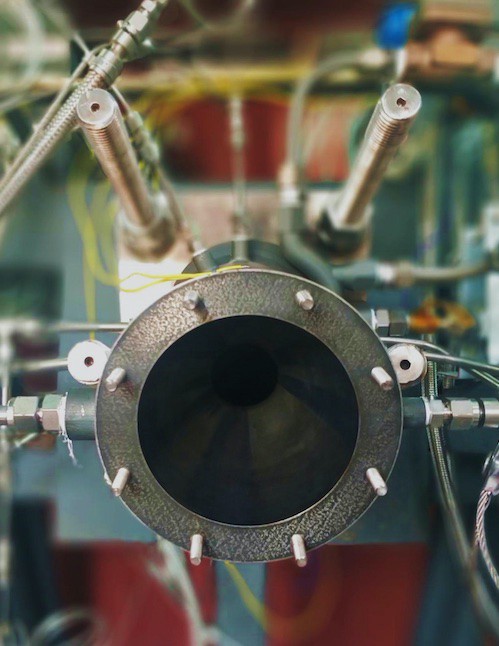India’s space tech industry is preparing to scale spacecraft production as it races to launch small satellites into orbit next year. Like many leading companies and startups in the global private space sector, India’s space entrepreneurs have also turned to 3D printing technologies to sustainably lower spacecraft manufacturing costs, increase lead times and revolutionize custom part development. One of the emerging businesses using additive manufacturing (AM) as part of its growth strategy is rocket maker Agnikul Cosmos. The startup announced a new partnership with global 3D printing provider EOS to develop its rocket engines fully in-house.
Following the signing of the deal in late August 2021, the companies said they would work together on 3D printing parts for its rockets and their subsystems, conceiving innovative manufacturing solutions to speed up the design and development of affordable launch vehicles that drastically reduce launch wait time for customers. As part of the agreement, Agnikul will also install an EOS M400–4 printer in its facilities and will rely on EOS’ Additive Minds technical consulting services to advance 3D printing of rocket engines all the way to space qualification, better known as Technology Readiness Level (TRL) 9, that is once a technology has been “flight-proven” during a successful mission.
Based out of the National Center for Combustion R&D at the Indian Institute of Technology (IIT) Madras, Agnikul is building Agnibaan, an orbital-class launch vehicle expected to carry micro- and nano-satellites –up to 100kg of payload– to low Earth orbit (LEO) on-demand in 2022. In February 2021, the space tech startup test-fired the fully 3D-printed rocket engine Agnilet. Produced as a single component in one run, the higher stage semi-cryogenic liquid propulsion engine is described by the startup as the first single-piece 3D printed rocket engine to pass a fire test successfully.

Successful firing of Agnikul’s single piece, fully 3D printed, semi cryo Agnilet engine until it reached steady-state temperatures. Image courtesy of Agnikul.
What is also astonishing about many of these single-piece engines built by several space companies is that they compete against labor-intensive conventional fabrication techniques that demand engineers to weld or braze together thousands of components into one engine. Instead, companies like Agnikul save serious time by turning to 3D printing, which helps them craft hundreds of cooling channels in the rocket engine or design complex geometries of injectors (which usually require hundreds of machining processes for precision). By leveraging AM, Agnikul can make single-part engines in less than 72 hours, ready to be fitted in a space vehicle after standard post-processing.

Agnikul’s single piece fully 3D printed rocket engine Agnilet and a fully 3D printed cryogenic pump. Image courtesy of Agnikul.
Thanks to the EOS deal, Agnikul said owning a printer in-house would allow it to own the entire rocket engine-making process from start to finish. Thus, enabling rapid product realization by eliminating other dependencies in engine making. Aside from the obvious advantages of having the machine on-site, Agnikul hopes that the 24/7 printing availability will also provide quick progress in understanding and developing futuristic materials research, considered the key foundation stones that will form the bedrock for intellectual property developed within the company.
According to Agnikul, 3D printing an entire rocket engine in one shot effectively allows for automation of the engine-making process, thereby facilitating launch-on-demand, which is increasingly becoming the target of many emerging space startups worldwide. Agnikul further described that 3D printing will aid in moving the small satellite launch market towards a “customer-centric business model instead of what it is today — a vehicle-centric model.” For now, making launch vehicles as customizable and flexible as possible and engines on-demand appears to be part of the company’s DNA and a good starting point.
However, as many newbie spacecraft manufacturers, there is still a long road to becoming the next SpaceX, Blue Origin, or Virgin Orbit. Competing with these giant leading forces in the private space industry will not be easy, but the diversity in the space landscape makes this expanding industry ever so interesting. Working towards its future goals, Agnikul has raised a total of $14.5 million in funding over four rounds, their latest from a Series A round in May 2021.
In a blog post announcing the deal, Agnikul said the partnership with EOS would provide a great platform to develop made-in-India rocket engines, which is part of a mission that aims to make the country “self-reliant” or, in Hindi, AatmaNirbharBharat. In 2020, the phrase was used and popularized as an umbrella concept by India’s Prime Minister, Shri Narendra Modi, aiming to make the country “bigger” and “more important” in the global economy.
Following up on several reforms last year, the country also opened up its space program, hoping to encourage startups to create technologies and spacecraft for the burgeoning global market of small satellites and launchers. Valued at $7 billion, the Indian space economy aspires to grow at roughly 48% CAGR over the next five years to reach its target of $50 billion. Companies like Agnikul hope to benefit from this massive opportunity and speed up the country’s space activity. As the government continues to open up the space sector to private entities, we will see more startups leveraging 3D printing to tackle a growing need for more rockets, satellites, and ground operations like mission support.
Subscribe to Our Email Newsletter
Stay up-to-date on all the latest news from the 3D printing industry and receive information and offers from third party vendors.
You May Also Like
Further Understanding of 3D Printing Design at ADDITIV Design World
ADDITIV is back once again! This time, the virtual platform for additive manufacturing will be holding the first-ever edition of ADDITIV Design World on May 23rd from 9:00 AM –...
3D Printer Maker EVO-tech Reborn as NEVO3D — Once More With Feeling
EVO-tech was a 3D printing service and original equipment manufacturer established in 2013 and based in Schörfling am Attersee, Austria. The company produced high-quality material extrusion systems featuring linear bearings,...
3D Systems Brings 3D Printed PEEK Cranial Implant to the U.S. with FDA Clearance
For more than 10 years, 3D Systems (NYSE:DDD) has worked hand-in-hand with surgeons to plan over 150,000 patient-specific cases, and develop more than two million instruments and implants from its...
CDFAM Returns to Berlin for Second Annual Symposium
The second CDFAM Computational Design Symposium is scheduled for May 7-8, 2024, in Berlin, and will convene leading experts in computational design across all scales. Building upon the first event...


































